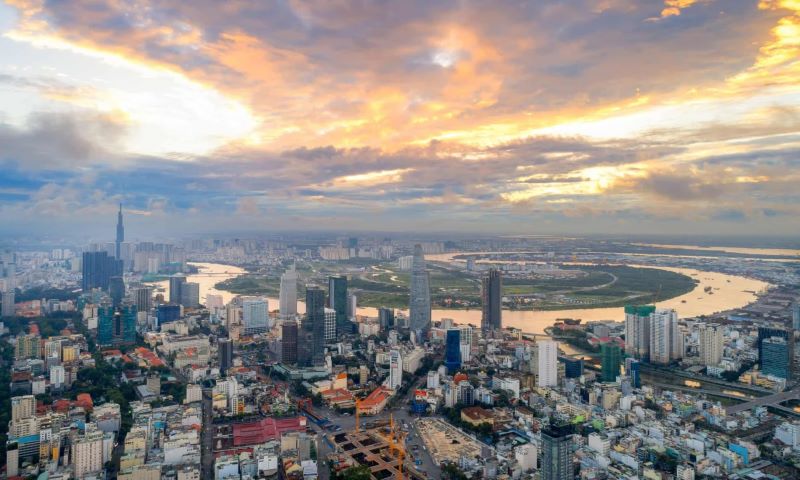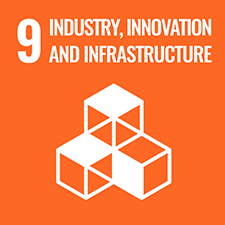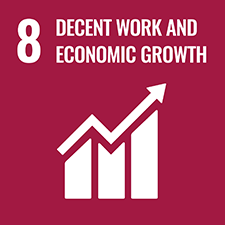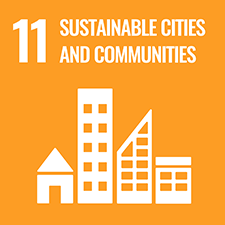![[Podcast] Developing Science and Technology and Technological Innovation in the Southeast Region (Part 2): Solutions to Enhance Technological Innovation and High-Tech Application](/images/upload/img_background/ueh-bg-093944-091923.jpg)
[Podcast] Developing Science and Technology and Technological Innovation in the Southeast Region (Part 2): Solutions to Enhance Technological Innovation and High-Tech Application
19 Sep, 2023
The Southeast is the region with the largest economic activity in the country. However, in the recent years during the Covid epidemic, the growth rate of the Southeast region has tended to decrease and to be lower than that off the whole country. Through analyzing and evaluating the current status of technological innovation and high-tech application activities in the Southeast region, the authors have presented great achievements and causes of limited impact on science and technology innovation activities of the region. From here, we propose solutions to innovate technology and apply high technology to improve the quality of growth in the Southeast region.

Limitations in terms of the development of science, technology and technology in the Southeast Region
First, the Southeast Provinces do not have a common strategy, planning or plan in cooperation to develop science, technology and innovation. Each Province does science and technology independently with its own goals and plans, leading to the dispersion of already-completely-thin resources: financial resources, human resources, senior experts, and technical facilities. In some cases, there is unreasonable competition between Provinces in the Region: competition in attracting high-tech FDI investors, competition in attracting high-quality labor, many overlapping scientific research topics and so on. It is the huge difference in the level of science and technology development among Provinces significantly affects the overall development of the entire region.
Second, the Southeast Region comprises approximately 80 Universities and 70 Colleges, nevertheless, these institutions have not attached science and technology activities yet so as to solve the region’s socio-economic problems effectively. The scientific research results of innovation centers at academic institutes have not absolutely come to life while the ability to apply and to commercialize technology products is being limited. Each school and institute in the Southeast Region has no plan to actively participate in projects, schemes, and plans in terms of science and technology development in the Region. Technical Universities in the area have not been the nucleus of new science and technology development yet; consequently, many research projects are basically theoretical with limited application.
Third, the Provinces in the Southeast region have long had a policy of attracting high-tech FDI projects. The point is that the effective attraction measures are being limited; as a result, the products produced by FDI enterprises are mainly technology products which are processed and assembled, using low-skilled labor. Very few FDI enterprises operating in production in the Southeast Region organize research on new technologies and create products with new technological trends. In short, FDI corporations operating in the Southeast Region have not really participated in contributing to turning this region into a high-tech production center of the Region and the world.
Fourth, research centers and laboratories in the Southeast Region lack operating funds and lack of connection with each other. The fact that the cooperation with countries in the region and the world in research and development is only in the initial steps has not created technological breakthrough products yet that resonate domestically and internationally. Meanwhile, many supporting industrial products produced domestically are not sufficient and must be imported. Product production efficiency in the Southeast region is not high.
Fifth, basically businesses operating in the Southeast region have been using average technology originating from China while very few businesses set up a “Science and Technology Development Fund” in the spirit of guidance of the joint circular between the Ministry of Science and Technology and the Ministry of Finance (Instruction Circular No. 12/2016/TTLT-BKHCN-BTC dated on June 28, 2016). Nearly 7 years have passed, the number of businesses dedicating to the Fund is less than 0.1% of the total number of operating businesses. Many corporations and businesses have established a Fund, nevertheless, its use is very limited. Of these few businesses that have established a fund, nearly 80% of businesses deduct the Fund but do not use it. This is the reason why the technical and technological level of enterprises is limited and labor productivity is not high. The number of production and manufacturing enterprises with science and technology research laboratories is very small, including in the FDI sector. Enterprises in the Southeast region have not strongly participated in the science and technology market as both the demand and supply sides of the market. Many businesses in the Southeast Provinces, including Ho Chi Minh City, do not consider science and technology development as an important factor for businesses to maintain competitiveness in the context of increased economic integration.
Sixth, deploying the application of 4.0 technology in production and life as well as managing socio-economic activities in the Southeast Region, generally, is still a movement, in other words, achievements are not equivalent to the goals and resources spent. Implementing digital transformation contributes to 4.0 technology application accerleration is manifested as follows:
- Among Provinces in the Southeast Region, sharing of information and data resources among Provinces and within each Province is being limited.
- Infrastructure for digital transformation in the Southeast Region, including Ho Chi Minh City, has not met the requirements, especially in remote areas (old machinery and equipment, transmission lines, unstable speed, limited human resources and so on). Table 2 below partly summarizes provincial-level digital transformation activities in the Southeast Region in 2021.
Table 2 : Situation of digital transformation implementation in the Southeast Provinces in 2021
|
No. |
Southeast Provinces |
Overall ranking regarding digital transformation* |
Digital government ranking |
Digital economy ranking |
Digital society ranking |
Human resources |
Digital infrastructure |
|---|---|---|---|---|---|---|---|
|
1 |
Hồ Chí Minh City |
3 |
4 |
1 |
29 |
11 |
1 |
|
2 |
Đồng Nai |
19 |
17 |
3 |
21 |
16 |
37 |
|
3 |
Bình Dương |
22 |
16 |
36 |
33 |
7 |
5 |
|
4 |
Bình Phước |
9 |
3 |
28 |
11 |
13 |
8 |
|
5 |
Bà Rịa- Vũng Tàu |
29 |
44 |
14 |
28 |
56 |
6 |
|
6 |
Tây Ninh |
44 |
50 |
58 |
58 |
54 |
29 |
Source: Ministry of Information and Communications 2021
*The overall ranking of digital transformation is dependent upon 9 main indicators reflecting the digital transformation situation with 98 component indices.
- Manufacturing and service enterprises operating in the Southeast Region applying 4.0 Technology are being simple at low levels, many units are using unskilled labor to organize production and business. As a result, labor productivity is not high and business efficiency is limited.
Up to this present timeline (March 2023), the science and technology development of the Southeast region has neither been completely strong nor become a center for science and technology development that has an impact on the socio-economic development of the southern region and the whole country. Ho Chi Minh City has not achieved one definite science and technology position in Southeast Asia or the world.
Causes of the weak operation
*In terms of the State & City:
- On May 11, 2022, the Prime Minister issued Decision No. 569/QD-TTg promulgating the Strategy for developing science, technology and innovation (STI) until 2030. Nevertheless, the Southeast Region and each Province and City in the region has not developed and implemented a specific strategy on science, technology and innovation yet. • Many of the State’s preferential policy mechanisms to encourage businesses to develop science and technology have not come to life yet. For example, Joint Circular No. 12/2016/TTLT-BKHCN-BTC dated on June 28, 2016 guiding the content expenditure and management of the “Science and Technology Development Fund” of enterprises. Up to the present time, nearly 7 years have passed while the number of businesses applying this preferential mechanism is approximately 1% of the currently operating businesses as it is difficult to apply and the explanation procedures are complicated.
- The economic development mechanism and the science and technology development mechanism of the Provinces in the Southeast Region are not absolutely closely linked together: socio-economic development has not placed the orders for science and technology; therefore, science and technology research has limited conditions. To apply or to hand over to Departments and Branches to implement the application, the research results are mostly formal.
- The main reason is that science and technology is not considered an important factor determining the speed and quality of economic growth of each Southeast Province. All of the policies of the Provinces mention science and technology. Nevertheless, these implementation measures have various limitations while there is no breakthrough decision on general science and technology development for the whole region and each Province.
- The entire Southeast Region does not have a common focal point and each City/Province Department of Science and Technology in the Region has not well performed the function of advising competent agencies in choosing research directions and potential beneficial products and development and proposing the best solution regarding policy mechanisms to develop science and technology products so as to meet the requirements of the 4.0 Industrial Revolution.
- Salary policies and incentives to encourage students and workers to study technical and high-tech fields have not come to life yet. Meanwhile, this human resource plays the most important role in implementing the 4.0 Technology Revolution and developing science and technology applications in businesses.
- The Provinces in the Southeast Region, including Ho Chi Minh City, do not have policies to encourage high-tech companies to come to Ho Chi Minh City to establish research and development centers.
- The fact that the issue of intellectual property rights protection has not been managed thoroughly and effectively is a barrier limiting the development of science and technology.
* In terms of the business:
- Enterprises in the Southeast Region do not have a strategy with specific measures and steps to invest in technological innovation and application of 4.0 Technology. In accordance with Government regulations, every year, state-owned enterprises in Ho Chi Minh City must deduct the level of investment for technological innovation in enterprises in Export Processing Zones and Industrial Parks only approximately 0.3% of annual revenue, mainly Procurement of hardware technology (machinery, equipment); in contrast, it is 5% and 10% in India and Korea, respectively.
- Digital industry applications in production, trade, services, and market connectivity are being limited. In fact, the number of businesses in the city, especially SMEs, who understand the 4.0 Industrial Revolution is being limited.
- Lack in capital and difficult access to capital sources affect the application of achievements of the 4.0 Revolution in production and service business.
- The report of the Ministry of Science and Technology sent to the Government in 2016 raised this question: “In the context that Vietnamese enterprises have to compete fiercely in domestic and foreign markets, why are businessmen not completely interested in technological innovation and rarely place orders with domestic scientists to find the most economical solutions for production, to research new products and to replace the existing imported machinery?”
Solution recommendation to enhance technological innovation and high-tech application to improve the competitiveness of industrial clusters in the Southeast Region
From the science and technology management level at the Central level to the local Provincial/City level in the Southeast Region, it is to focus on reviewing and removing difficulties and bottlenecks in institutions, mechanisms and policies related to innovative-synchronous, effective, modern and integrated science and technology development development in accordance with the spirit of the Resolution of the 13th Party Congress and the Resolutions of the Politburo. Science and technology development strategies and programs in Provincial/City in the Southeast Region need to develop and to integrate tasks, plans/projects for science and technology market development into the 5-year and annual socio-economic development plans. The Provincial/City People’s Council of the Southeast Region must have a program to monitor the implementation of science, technology and innovation plans in their localities.
Each province/City in the Southeast Region effectively organizes and implements the overall goal and 9 specific goals of the Science, Technology and Innovation Development Strategy until 2030 approved by the Prime Minister. The Government approved it on May 22, 2022. The Provinces in the Southeast Region should have a common strategy (Project) on developing science, technology and innovation; There is a joint action program of the Southeast provinces on technology market development, specifically:
- Building a common mechanism to promote the development of supply and demand of the science and technology market as well as to improve the capacity to absorb, master and innovate technology of enterprises operating in the Southeast Region. The Department of Science and Technology of each Province suggests that provincial-level local authorities promulgate support mechanisms to help strengthen the cooperation among businesses, research institutes, universities and connect supply and demand between buyers and products’ sellers. Science and technology products have been commercialized.
- Promoting the development of a network of intermediary organizations on the foundation of connecting technology exchanges, science and technology service organizations at research institutes, universities, businesses with application and transfer centers. deliver scientific and technological progress.
- Investment in developing technology trading floors in the Southeast Region, connecting with the system of technology transfer and application centers in Asia and the world.
- Provinces/Cities in the Southeast Region cooperate to organize science and technology market promotion events on a regional, national and international scale; to promote the science and technology market and innovation; to integrate and to coordinate trade and investment promotion events with science and technology market promotion.
- The Provinces in the Southeast Region coordinate to gradually connect and integrate with technical platforms for domestic and international science and technology markets.
- Cooperation in training and fostering scientific and technological human resources. Further promoting propaganda work and raising the awareness of the entire society regarding the position, the role, the meaning and the importance of the science and technology market. Developing pioneering businesses in technology trading, especially high technology and source technology. Applying Industry 4.0 in production and business.
Provinces in the Southeast Region promote interconnection, moving towards synchronization of the science and technology market with the goods, service, labor and financial markets. Promoting public-private cooperation, mobilizing capital from businesses, people, and society to develop the science and technology market.
Focusing on building and piloting in the Southeast region policies to create motivation for commercializing science and technology products, quickly bringing research results and intellectual property created from state budget sources, public-private cooperation and private investment in production and business, focusing on risk-taking policies in science and technology activities; Encouraging public-private cooperation and private investment in projects to commercialize research results and intellectual property.
Replicating innovation models and apply science and technology, including 4.0 technologies into production and business.
Developing policies to encourage startups, innovation, develop large databases, and share data and information to promote the development of a comprehensive and synchronous science, technology, and startup ecosystem.
Upgrading technology incubators in the region, improving the quality of innovative start-up activities, and support the creation of “Unicorns” in technology. Strengthening the role of Universities in scientific research and technology transfer.
Please refer to the full paper “Developing Science and Technology and Technological Innovation in the Southeast Region” TẠI ĐÂY.
Author Group: Meritorious Teacher. Prof. Dr. Vo Thanh Thu - Ho Chi Minh City University of Economics (UEH), MSc. Pham Quang Van – Ho Chi Minh City University of Technology.
This is an article in the series of articles spreading research and applied knowledge from UEH with the “Research Contribution For All - Nghiên Cứu Vì Cộng Đồng” message, UEH cordially invites readers to watch the next Newsletter ECONOMIC No #84.
News, photos: Author Group, UEH Department of Marketing and Communication
Voice of: Ngoc Qui





![[Research Contribution] Climate Adaptation and Ownership Structure: Determinants of Global Bank Performance](/images/upload/thumbnail/ueh-thumbnail-639024479352054880.png)


![[Research Contribution] Wage or Survival Fee? A New Perspective on Provincial Minimum Living Wages in Vietnam](/images/upload/thumbnail/ueh-thumbnail-639024468410266657.png)

![[Research Contribution] A Model for Assessing the Impact of Accounting Data Analytics on Sustainable Information Presentation in the Public Sector](/images/upload/thumbnail/ueh-thumbnail-639024469396621767.png)

![[Research Contribution] A Strategy for Engaging Stakeholders to Implement Living Labs for Addressing Urban Issues](/images/upload/thumbnail/ueh-thumbnail-639024459455096821.png)
![[Research Contribution] Foreign preference and students’ intention to buy chinese fashion in Ho Chi Minh City](/images/upload/thumbnail/ueh-thumbnail-639024247663259881.png)
